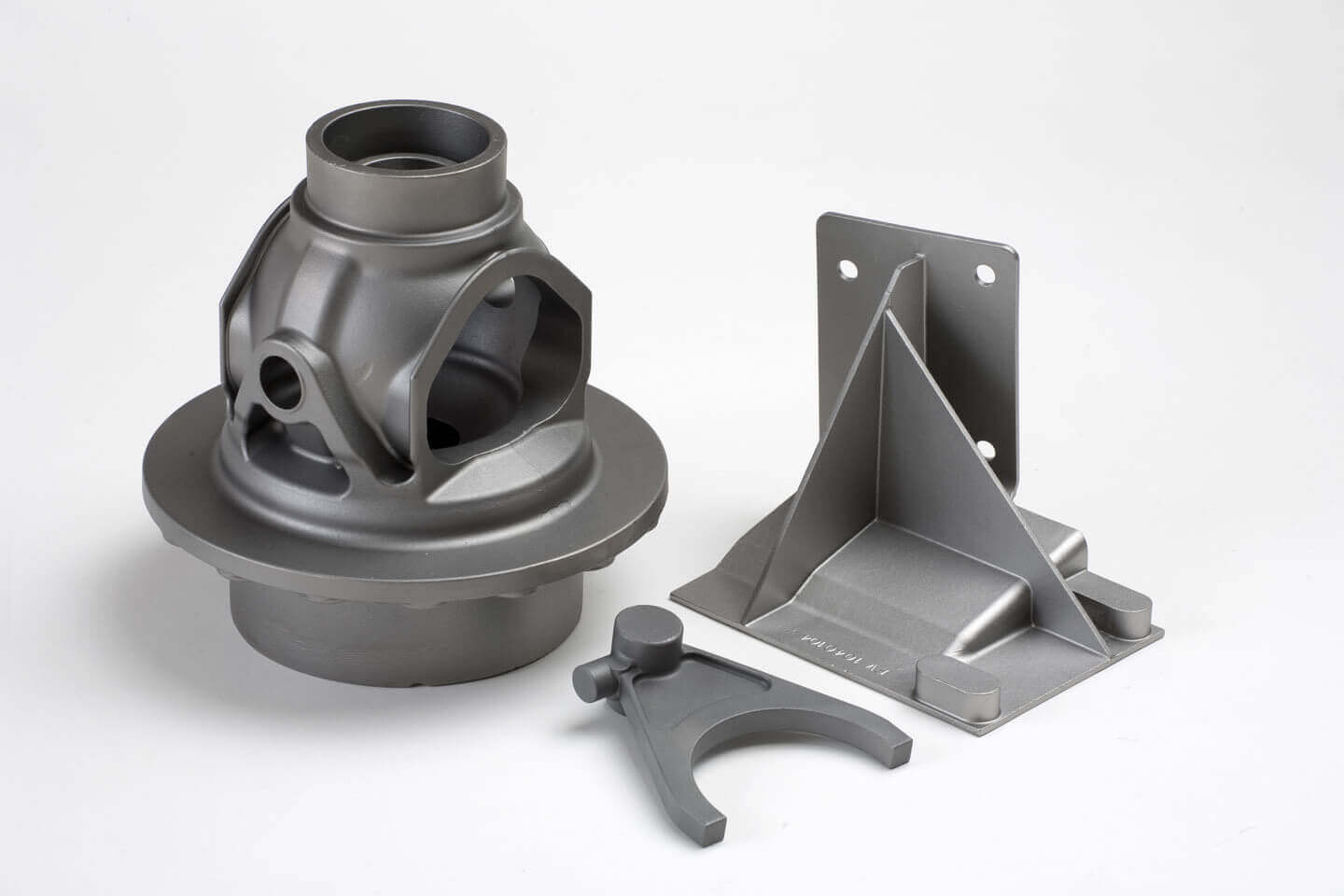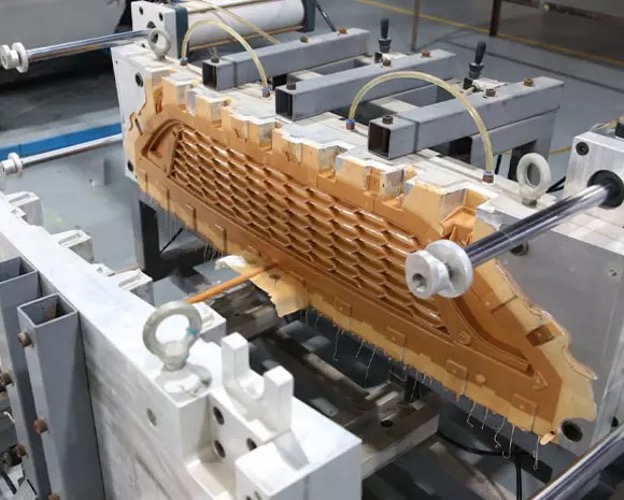What is Aluminum Die Casting?
Die casting is a manufacturing process that produces a metal part by forcing molten metal under high pressure into a mold cavity. Aluminum is the preferred metal for die casting due to its lightweight, high strength, and chemical resistance. The aluminum die-casting process is typically used in the manufacture of small parts like screws and gears where a high degree of precision is required.
Aluminum has long been recognized as one of the most important metals found in the industry today because it can be easily manufactured into all types shapes and sizes for a wide range of applications in different kinds of industries.
How Does it Work?
The aluminum die casting process begins with the first step of providing the designer with specifications regarding the size and shape of each part they would like to create. The designer then reduces their design down to a 3D model which is then placed into the computer in order to create a mold based on this model.
With the design and the 3D model, the designer can produce a mold using the material and computer software. In order to create a mold, a die is used to form an impression of their design in a liquid metal for forming a part. The liquid metal is then carefully poured into the mold where it hardens forming an exact copy of their original design.
After manufacturing, these molds are then used to produce many thousands of copies of these parts which can be used for multiple purposes after their initial production by die casting.
Advantages of Aluminum Die Casting
One of the main advantages of aluminum die casting is that it can be made in large quantities for mass production, or one-off units depending on your specifications. There are many other benefits of types of aluminum die casting defined below
1. Finished Products With Excellent Surface Finish
When the molten metal filling inside the die cavity solidifies, it is ejected and cooled rapidly to form the finished product. As the gas formed by aluminum and oxygen in the molten process will be released through small holes on the sprue, which is called “flash”. And then this flash is ejected out of the die casting to form a smooth surface. Aluminum die casting does not have a problem with porosity.
The high density of aluminum alloys is able to withstand the cooling after solidification after pouring the molten metal into a filled die cavity. which has enough strength to support its weight. Solidification starts at room temperature – so there is no need for external heat treatment like zone refining, quenching, and tempering, thus producing very high surface finish parts.
2. Good Tensile Strength
Aluminum has good tensile strength with lightweight, which is accepted by most industries. When designing a part for aluminum die casting, it should be considered that the tensile strength and thickness of aluminum alloy must be within specification since it is the largest factor coming into play when designing a part to accommodate stresses caused by deformation during solidification and cooling.
3. Low-cost Raw Materials
Aluminum die casting has the advantages of low cost and is easy to maintain. Aluminum has a wide range of uses in the economy. Although it has very little value in the metals market, aluminum is not as hard to obtain as many other common materials such as copper, lead, brass, magnesium, and zinc. Most of these metals are expensive and relatively scarce to obtain making them difficult options for some industries. By using aluminum in die casting, companies can use a more affordable raw material in production processes that require complex and durable components for manufacturing.
4. Reduction of Porosity and Impurities
Pores, bubbles, and other imperfections are introduced into the casting as it solidifies. These extrusions result in a reduction in strength and can also cause problems with gasket sealing, poor fit-up of mating parts, dust and smoke emissions during combustion, and other effects.
Using the technique of gravity die casting can reduce the porosity by 80% to 90%. This is achieved initially by reducing the velocity of metal flow toward the mold walls during solidification. Residual gas formation is minimized as the metal solidifies against gravity in the cavity below.
Materials of Aluminum Alloy Die Casting
Aluminum alloys are the most common choice for aluminum die casting as they are inexpensive, have good mechanical properties, and are easy to cast.
1. A380
A380 is the most common aluminum alloy used in the aerospace industry. The alloy is also used in the automotive, packaging, and hardware industries. It contains around 7.5-9.5% silicon, which gives it improved strength characteristics over other types of aluminum alloys. Aluminum die castings are made from A380 by gravity die casting, pressure die casting, or centrifugal casting.
2. A390
A390 aluminum has high strength and stiffness-to-weight ratio compared to other types of aluminum alloys. It contains around 16-18% silicon. It is relatively easy to machine and weld and can be anodized to produce a corrosion-resistant finish easily. Alloy A390 is mainly used in aircraft components such as braking systems, wheels, and landing gear legs.
3. A360
A360 is a low-cost alloy that has good strength and workability. It is used for a wide range of parts in the aerospace, automotive, machine tool, and electrical industries. It contains around 9-10% silicon and improves strength over other types of aluminum alloys.
Surface Finishing Options for Die-Cast Aluminum
1. Anodizing
Anodizing improves the corrosion resistance of aluminum and adds a decorative finish. The die-cast aluminum components are first cleaned thoroughly to remove any scale or dirt. It is then rinsed with water to remove grease and oil. The parts are then placed into an electrolytic solution until they develop a coating of oxide. They are then rinsed again and dried, which causes the oxide layer to form a bond with the aluminum surface. This makes it harder than the metal itself, which gives it a shiny appearance. Anodized surfaces have excellent corrosion resistance and will last for a long time before having to be re-anodized.
2. Sandblasting
Sandblasting is a process that removes a small portion of the aluminum surface to expose the underlying metal. It is often used to remove paint from components. However, it isn’t ideal for anodizing since it exposes the part to debris and dust, which can lead to rust over time.
3. Sanding
Sanding is a standard method used just to smooth out an uneven surface on a die-cast part before painting or anodizing it. It mainly removes surface scratches or tiny bits of flash that are exposed outside the final stamping mold and that can be removed by hand using sandpaper.
4. Painting
Painting provides a protective coating over the aluminum surface that can be anodized or left as it is. It can be used on die-cast parts that are already sandblasted, but it isn’t ideal for new parts because it is not a good base for anodizing. Paint can chip off easily and needs to be reapplied frequently.
Aluminum die-casting products are used in industries such as transportation, aerospace, electronics, machinery, and construction.
FAQ about Aluminum Die Casting
How strong is die-cast aluminum?
Die-cast aluminum is stronger than any other metal. Aluminum has very high strength and stiffness which is why it is used for all kinds of engineering components. It is stronger than other metals such as steel and magnesium so it can hold the same amount of load. The strength of the die-cast aluminum is different depending on the strength of the metal alloy used in each die casting, and then adding a certain amount of alloying elements such as manganese to improve the physical properties.
Is die-cast aluminum better than stainless steel?
Die-cast aluminum is stronger than stainless steel because it is better in the areas of processing, features, and design. It has good tensile strength, plasticity, and ductility. However, it is not as good in corrosion resistance.
Depending on the type of die-casting process used to make your product more conserves energy and cost. The post-casting finishing requirements are also less when using die-cast aluminum as compared to stainless steel when used for example in gaskets or pipes.
What makes aluminum suitable for die casting?
Aluminum is a high-demand material worldwide in industries like the automotive industry, motorsport and aerospace. It’s very workable and low cost compared to other metals allowing companies to have fewer production steps or less expensive products with good quality on the market.
Conclusion
So, we have discussed about aluminum die casting along with its best surface finishing options. If you need a reliable manufacturer for aluminum die casting then there is no better option than KAIAO Rapid Manufacturing Co., Ltd.
KAIAO Rapid Manufacturing Co., Ltd. has been a leading provider of Rapid Prototyping, tooling, and fabrication solutions for the automotive and aerospace industries for over 25 years.
KAIAO is a prominent supplier of competitively priced rapid prototypes, tools, and parts with experienced engineering staff and advanced manufacturing facilities that provide product development experiences to customers who are looking to develop cost-effective prototypes or production solutions.
KAIAO is also providing aluminum die-casting surface finishing services, including anodizing, sandblasting, sanding, and painting.
KAIAO’s strength is derived from a highly experienced engineering staff, sophisticated rapid prototyping technology, and a manufacturing facility. It has successfully met many customers’ quality and delivery needs for both prototypes and small-scale production quantities. With our broad range of services, we are able to support your part/product requirements fully. In addition to providing competitive pricing, we strive to build lasting relationships with our clients through responsive service.



